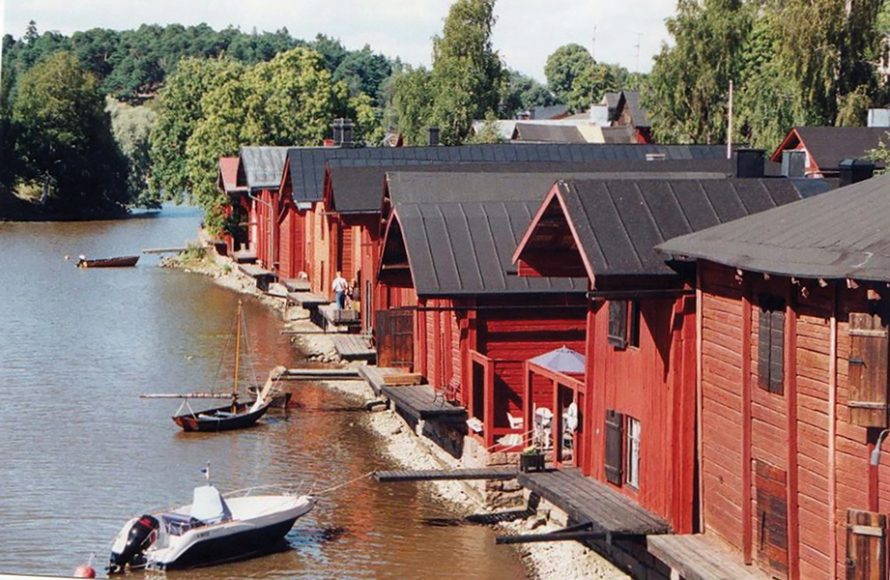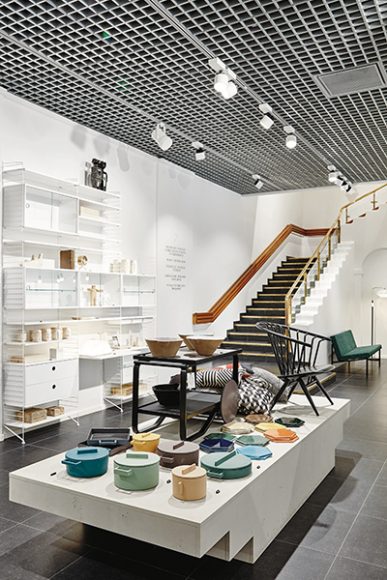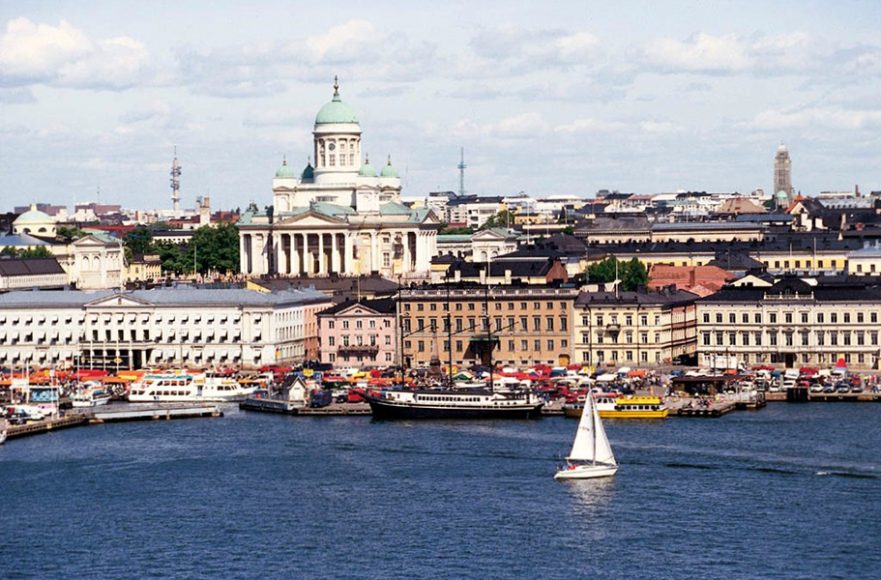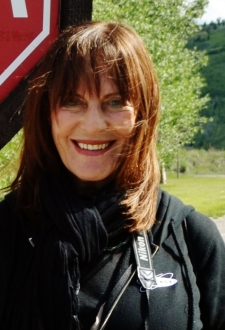Design should never say, “Look at me.”
It should always say, “Look at this.” And so it does in Finland. A few years back, the capital city of Helsinki was chosen to be the World Design Capital and, true to the quote, accepted the mantle, as did Finland, with the quiet dignity that compels you to look at it all, savoring the country’s stark beauty, the artistic, cutting-edge design visible everywhere and, most especially, the people who make you feel most welcome.
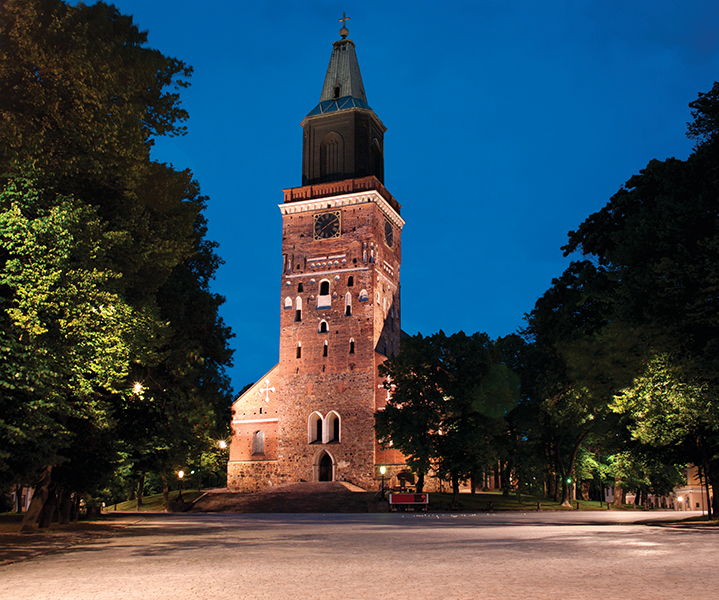
HELSINKI HIGHLIGHTS
This stylish, relaxed city is a dream destination for walkers as most of the important sights are conveniently situated in the city’s center. There are 80 intriguing museums here, enough to keep you busy for your entire stay. One appealing feature of Helsinki’s location is that there are ferry connections to Estonia, Sweden and St. Petersburg, Russia. Visitors often plan a one- or two-day excursion, using Helsinki as home base.
The Design District is Helsinki’s arts and crafts-oriented neighborhood, a cluster of creative businesses that offers a wide range of designer shops, interior decorating studios, antiques dealers and jewelry boutiques. I visited some of the workshops and saw design being created right before my eyes. At a silver shop, I looked on as the designer made a lacy, filigree pendant and added the finishing touches to a heavy silver ring set with a fine piece of jade. The innovative be&liv studio offers contemporary home décor and lifestyle items. I was seduced by an adorable tabletop accessory, a decorative fruit bowl made of individual petal-like pieces. Its organic shape resembled that of a perky pink flower and I quickly decided that this piece of whimsy was going home with me.
When one thinks of cool, elegant design, thoughts invariably go to Marimekko. The company was founded in 1951 by Viljo and Armi Ratia, who, after their oil cloth factory failed, asked some of their artist friends to apply their graphic designs to textiles. They then begin using this fabric to sell a line of simple dresses. Around 1960, Maija Isola designed the iconic Unikko (poppy) pattern and Jacqueline Kennedy bought eight Marimekko dresses that she wore throughout her husband’s presidential campaign.
Market Square is lively and bustling with vendors selling everything from berries to clothing and jewelry. I had a pleasant morning sitting at a café, drinking coffee brewed strong and steaming, complemented by some fresh Finnish cloudberries, and allowing myself to be caressed by sea breezes right beyond my table.
Because you won’t have time to see all 80 of Helsinki’s museums in a single visit, may I suggest one that you must not miss? It’s the Ateneum, which houses the largest art collection in the country, displaying Finnish art from the 1750s to the 1960s and Western art from the late 19th century to the 1950s. It also contains the first Van Gogh ever placed in a museum and Hugo Simberg’s haunting “The Wounded Angel” (1903) a Symbolist painting depicting two boys carrying the titular angel — eyes bandaged, wings drooping — off to the Blind Girl’s School, a popular charitable institution in Simberg’s day. (The painting’s meaning may also owe something to Simberg’s suffering from meningitis at the time he painted it. The angel carries snowdrops, a symbol of healing and resurrection.) “The Wounded Angel” was voted Finland’s national painting, and you’ll remember it long after leaving the Ateneum.
One memorable evening, I had the pleasure of attending a Jean Sebelius concert by the Tapiola Sinfonietta held at Helsinki University Hall, the very room where Sebelius began his career in 1899. Conductor Leif Segerstam — he of the downy beard and hair — was so joyous and irrepressible that you could not but glide along on his flourishing baton as he conducted the glorious Symphony No. 1 in E minor.
PORVOO PLEASURES
A convenient hour’s drive east of Helsinki, medieval Porvoo is Finland’s second oldest city, rich in history, with red, wooden storehouses that line the river and testify to the city’s heyday as a major port for merchant ships plying the world’s oceans. High on a hill sits Porvoo’s most recognizable landmark — the Lutheran Cathedral, which has dominated the place since the early 1400s. We strolled through Old Town, built on a dense labyrinth of narrow cobblestone streets and alleyways and lined with colorful cottages, galleries and boutiques.
It is there that we explored the Porvoo Museum with exhibits on the city’s history, including artifacts and art. The museum recently debuted a fine exhibit on Porvoo’s prehistoric times and the Middle Ages. Holm House, a part of the museum, was built in 1763 and offers an opportunity to see how a wealthy merchant family lived at the end of the 18th century.
Porvoo is known for its sweets so naturally we couldn’t leave without answering the call of our sweet tooth. Locals told us to visit The Little Chocolate Factory on Church Square. True to its name, the shop was so tiny we were barely able to fit through the door. But, not to be deterred, we were rewarded with rich and sumptuous chocolates, a treat I’d squeeze through this door for again in a heartbeat.
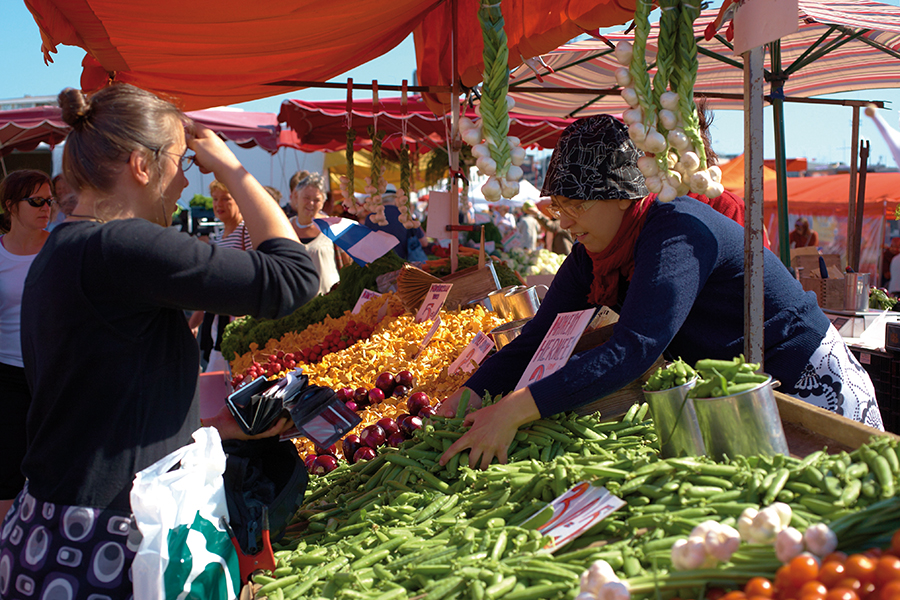
TOOLING AROUND TURKU TOWN
Turku has played a very vital role in Finnish history, being the oldest city in the country and the first capital of Finland. Founded in 1229, Turku is situated in the southwest region, the oldest inhabited area dating back 8,500 years. Fast-forward to modern times: Turku has been recognized as a European Capital of Culture, together with Tallinn, Estonia.
With its pristine countryside and an amazing archipelago nearby, Turku today provides lush and imposing sights to behold. The area is famous for its manor houses where historical figures lived and reigned, surrounded by lovely parks and gardens. We climbed up Unikankare Hill to Turku Cathedral, the heart of the Lutheran Church in Finland and the country’s national shrine, completed at the end of the 13th century. How fortunate were we that, as we stood gazing at the intricate carvings in the ceiling, the cathedral’s famed 81-stop organ, built by the Finnish company Veiko Virtanen, began sounding.
Surrounded by so much imposing beauty and the soft tones of this special organ, we could not help but feel it was a truly magical moment.
For more, go to visitfinland.com.

